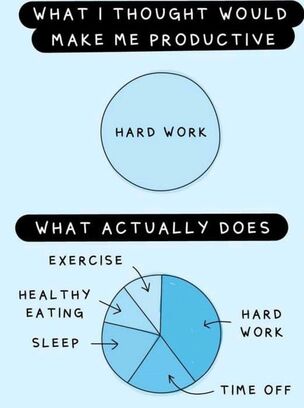
Too often, with my coaching clients, we have to address the problem that the team is resistant to the way their activities are measured. Perhaps they see their weekly activity report as admin – so they “tick the boxes”, telling their managers what they think they want to hear (or, in this case, read). Perhaps they just don’t agree with it, so they don’t bother to do it at all – or they have to be nagged 90 times before they do it. And, again, they do a shoddy job. They may or may not also tell you that they find it a waste of time. Or they may say nothing, and just give you the teenage eye roll!
The reasons for the resistance are some combination of:
- They don’t get it – meaning they don’t see these measures as important drivers of their results;
- They don’t see the value and they treat the process as admin;
- They don’t like the way the measures are recorded or reflected;
- They see it as micromanaging (which most people resist).
What you really want is the following:
- The team absolutely agrees that these measures represent their 20 mile march – they definitely drive achievement against the KPIs;
- The team has participated in setting the targets (or the target ranges for these measures);
- The team has been involved in designing the scoreboard – this is the document on which their performance (collective and individual) is reflected;
- They find the process of recording and reflecting on their team and individual performance motivating;
- They love the way the scoreboard looks and what it tells them and they get excited about reviewing their progress.
Agreeing on What to Watch
You will need to have one or more discussions in your team with a view to answering the following questions:
1. What are the behaviours or activities that drive each one of our KPIs?
This can be quite a rich discussion. There may be many drivers of your KPIs, but your objective here is to identify the clear performance markers that deliver achievement against the KPIs for your team. You must be able to set lower and upper limits for performance. These performance markers must be within the team’s control to achieve. They must have an appropriate timeframe – long enough to be able to manage them, and short enough to have an impact.
Settle on no more than 4 performance markers per KPI. It must not be a shopping list or tracking it will become a burden.
2. Set the lower and upper range of acceptable performance.
The key here is consistency. You do not want people to shoot the lights out on good days and do nothing on bad days (or weeks or months). You want them to do between the low mark and the high mark every day, week or month (or whatever time frame you choose). Using the language of the 20 mile march, you want them to march between 14 and 20 miles every single day, no matter the weather. You do not want them marching 40 miles on one day, then collapsing with exhaustion for the next 2 days, and being unable to go out on the 3rd day because of bad weather. 14 to 20 miles every day.
3. Design a Scoreboard
The team should decide on what the scoreboard should look like. It must be fun to update and use. You should be able to update it as close to real time as possible. It should also connect input measures (the behavioural drivers) with the KPIs. That means you should be able to see how performance against the behavioural drivers actually contributes to performance against the KPI.
I did an internet search using “how to put team metrics on a scoreboard” and came up with some exceptional guidelines.
Your team’s scoreboard may no doubt undergo a few iterations before the team is completely satisfied – and that is fine.
The scoreboard you settle on will meet the following criteria:
- The team will love how it looks
- It will be easy to update
- It will be updatable in as close to real time as possible
- The team will love updating it and reviewing their progress
- Individuals will be able to use it to motivate themselves
All of this speaks to the power of instant feedback. The best example of this I have ever seen is in the advertisement for bottled water: https://www.youtube.com/watch?v=GimoLDYI_JE.
4. Agree on the Rituals and Routines
Rituals and routines are those things that are done regularly and in a disciplined way in order to ensure that you and your team are paying attention to the important issues regularly enough.
Rituals tend to be interpersonal exchanges – meetings; coffee sessions; tele- or videoconferences. Examples of rituals include:
- The Monday morning meeting (teleconference/videoconference) to discuss priorities for the week;
- Your daily walk around the office or plant to take the pulse of the team;
- The team brown bag lunch session held once a month;
- The weekly scoreboard review;
- The monthly review of past performance and planning for the coming month.
Routines are activities that take place consistently. Examples of routines include:
- Checking yesterday’s performance every day before 9.00am and noting down any required follow up;
- Updating the Scoreboard or Project Tracking Boards;
- Making your appointments for next week every Thursday afternoon;
- Updating your activity records after (or during) every customer meeting
The team needs to agree on the appropriate rituals and routines that will keep them on track as both a team and as individuals. What will they do? What will you do? How will the scoreboard be updated? How often will you meet as a team to review progress and troubleshoot any issues? What is your agenda for that meeting?
So think about this:
What will you do with your team in order to reach agreement on the behavioural drivers, the targets for each one, the design of a scoreboard, and rituals and routines to be implemented?
Managing the Rituals and Routines
The Manager of the team us ultimately responsible for ensuring that the team is absolutely consistent in taking the 20 mile march. This means that you need to monitor whether the routines are being observed – is everyone consistently taking the agreed actions and inputting their own information? You also need to ensure that rituals are consistently observed – that the weekly meeting takes place every week at the same time regardless of who may be absent; that the meeting is short, lively and forward moving; that there is agreement on who will lead the meeting when you can’t be there.
It is also important to review the effectiveness of your rituals and routines every so often with your team. Here is a review agenda which you can modify to suit the situation:
- What did we set out to achieve?
- What did we actually achieve? What did we not achieve? What happened that we did not expect?
- What worked?
- What did not work?
- What are the lessons to be learned?
- What do we need to do now?






 RSS Feed
RSS Feed


